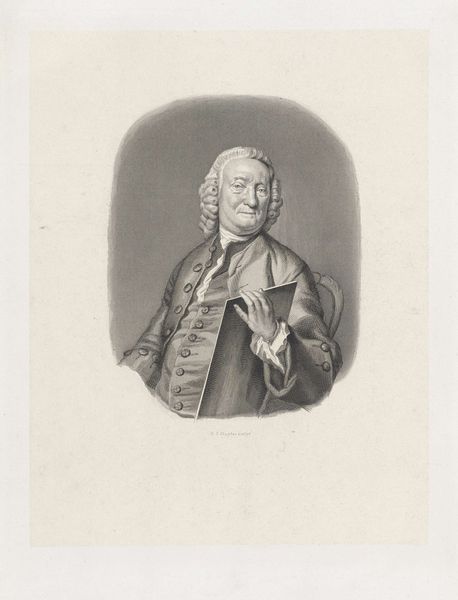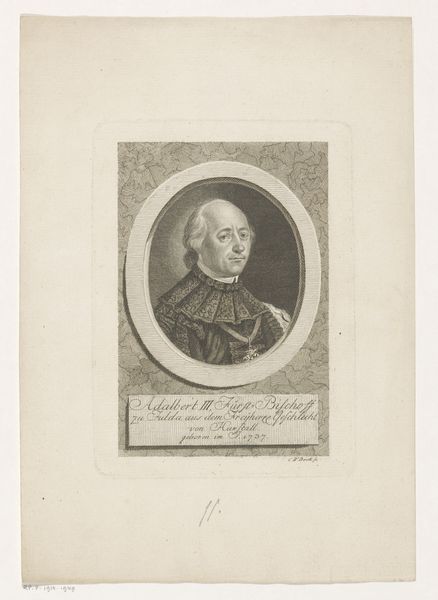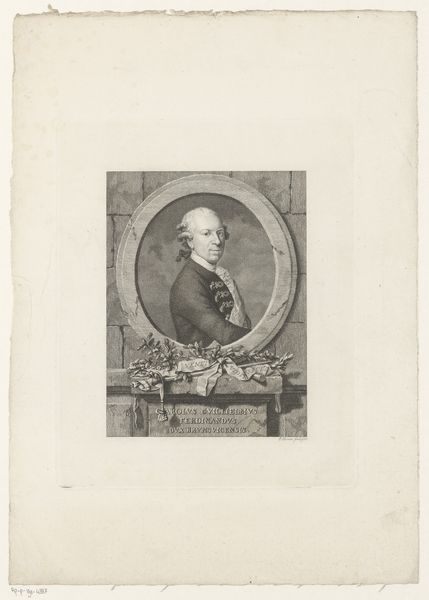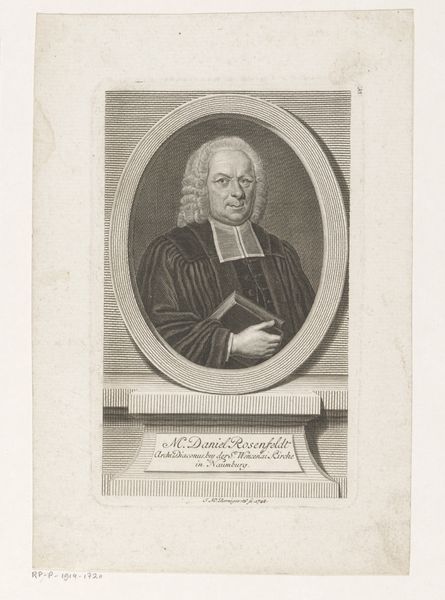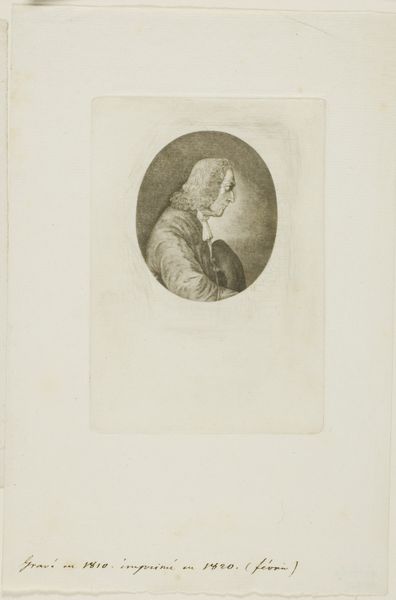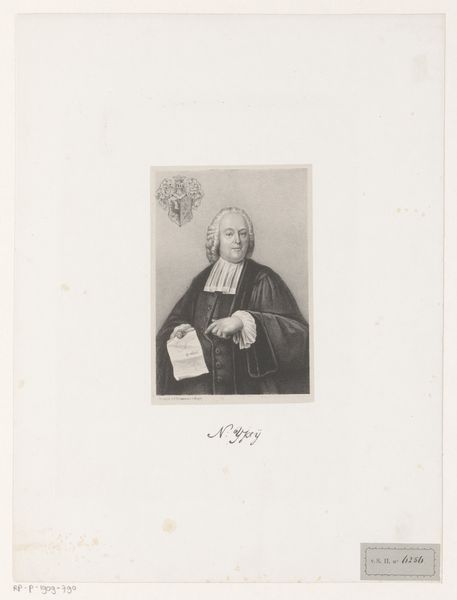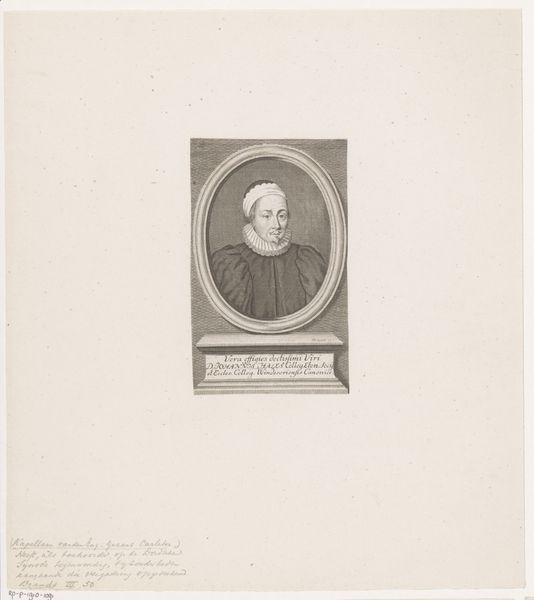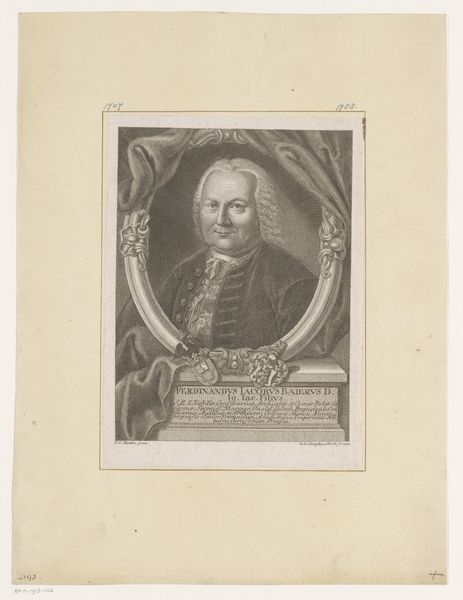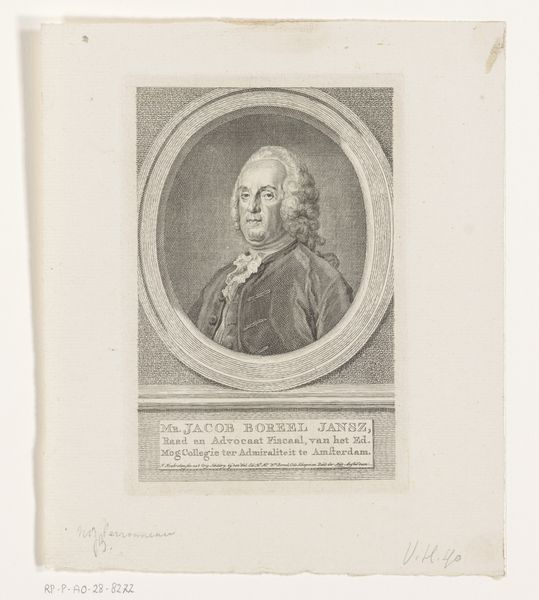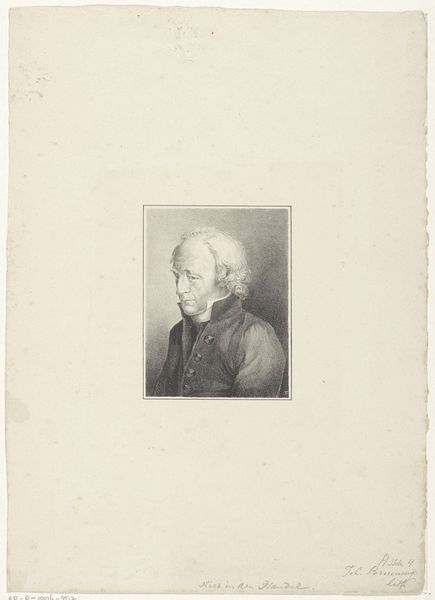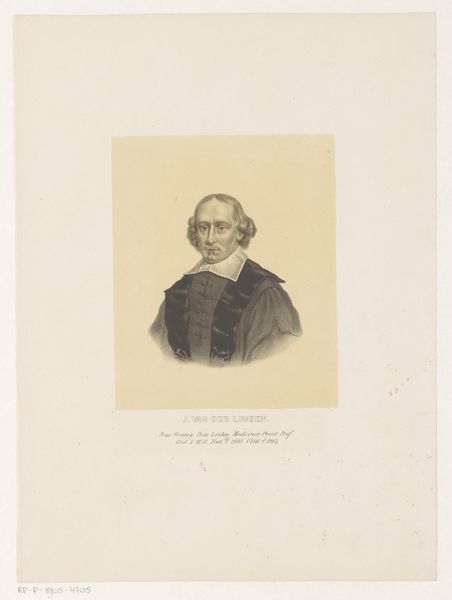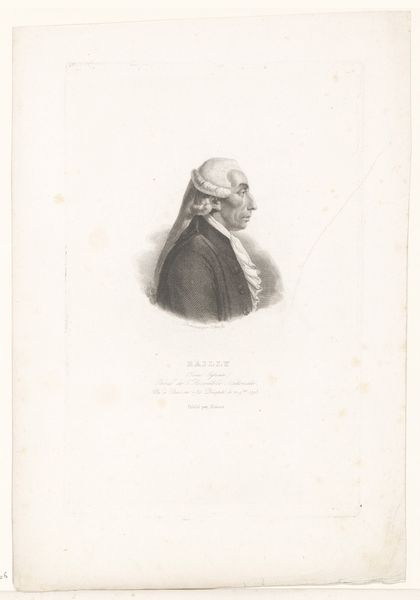
engraving
#
portrait
#
neoclacissism
#
history-painting
#
academic-art
#
engraving
Dimensions: height 263 mm, width 234 mm
Copyright: Rijks Museum: Open Domain
Curator: Here we have Abraham Bouvier's "Portrait of Edmé Champion," created sometime between 1811 and 1872. The artwork presents Champion rendered through engraving, a style reminiscent of neoclassical and academic art. Editor: Initially, it feels rather subdued. The monochromatic palette creates a sense of historical distance, while the subject’s calm expression lends an air of reserved dignity. Curator: Indeed. Notice how Bouvier uses precise lines and shading to define the contours of Champion’s face and clothing. There is a remarkable sense of realism, achieved through a meticulous arrangement of formal elements. It draws on classical ideals of proportion and balance. Editor: Considering the process of engraving, I’m interested in the social implications here. How does the mechanization of image production affect the distribution of power and knowledge? This portrait, reproduced many times over, carries cultural significance in its very fabrication. It asks questions about accessibility to art and whose likeness gets memorialized and disseminated in this manner. Curator: Absolutely. One could also examine the iconographic implications of the Neoclassical style itself. The precise rendering and balanced composition signify a desire for order, control, and a return to the perceived glories of antiquity—a very specific cultural moment. Editor: And the choice of materials, the paper and ink, and the laborious engraving, each act represents intentional labor. It begs one to contemplate on the cost and worth ascribed to images. The print is, in its essence, a commodity reflecting social values. Curator: These interpretations highlight both the structural underpinnings and the socio-economic context surrounding this piece. Looking at it through different interpretive lenses helps unveil latent nuances and broaden our understanding of the artwork’s original context and historical reception. Editor: Right, acknowledging materiality and labor adds to what feels initially restrained; Bouvier's creation encourages us to think about art's complex relationship with social change, craft, and representation.
Comments
No comments
Be the first to comment and join the conversation on the ultimate creative platform.
